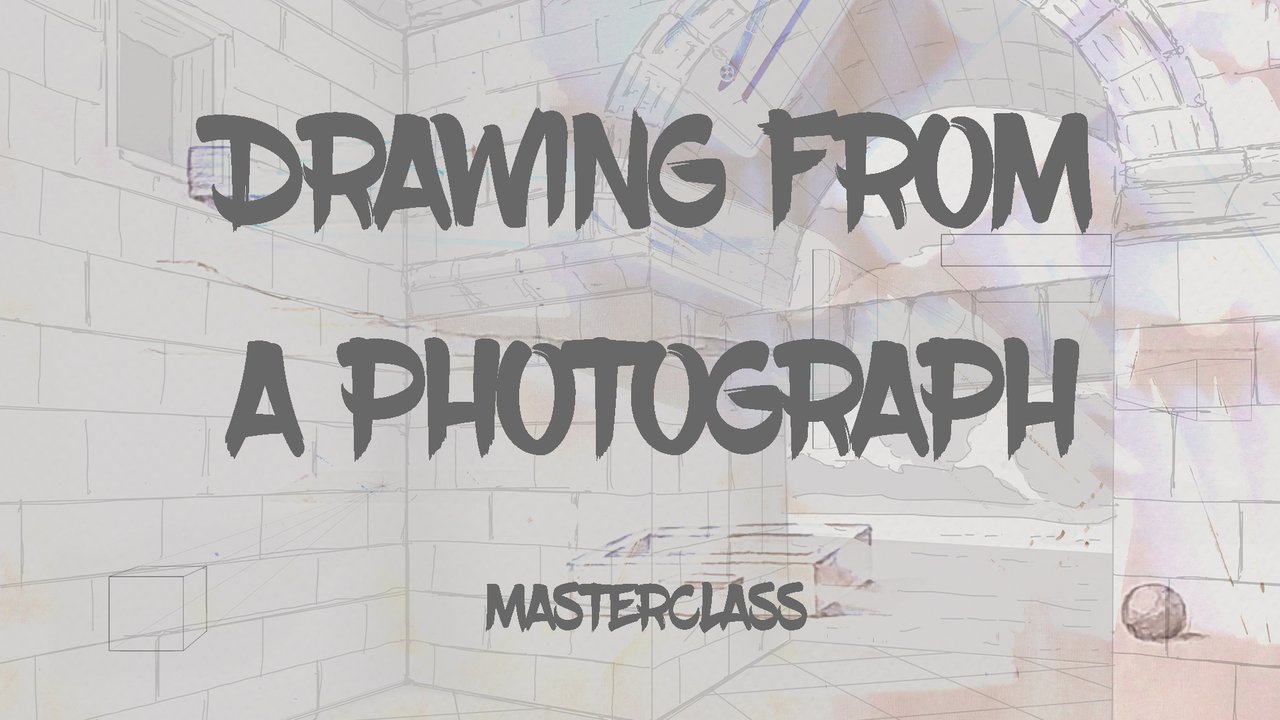
Hi friends!
Photos are a very useful material to help us observe and analyze what we want to interpret in a painting or drawing.
Today I will give you a sample of how to use a reference photo to draw using the rules of perspective and its practical methods.
I took this photo of the ruins of Diocletian's Palace in Split, Croatia.
It is very important to take a photo considering the horizon line and the vertical lines, these must be as little distorted as possible.
Even so, we must always keep in mind the perspective distortions caused by the camera lens. Anyway, that gives us free space to make our own interpretation of the photo.
In addition, the great advantage of having a photograph is the time we can spend analyzing it, it's unlimited.
The first thing we can notice is the sunlight. We see shadows and sunlight in this corner, which means there is no roof (it is a dilapidated building).
Using the direction of the sun's rays and shadows inside and outside this building, we deduce the height of this corner.

If we look for the vanishing lines and the horizon in this image, we find three vanishing points and there are also three horizon lines due to the distortion that can be caused by the camera lens or our measurements are not precise enough. So, to draw, we must choose only a horizon or eye-level line.
You can choose what you consider most suitable for your drawing and keep this horizon throughout the drawing, do not forget that the horizon line defines the location (distance and height) of the observer.
There is a fourth vanishing point for the floor that falls far on the horizon line, out of our drawing paper.
We will see this later.

I chose the VP1 and its horizon line (horizon 1) for the drawing, then I drew the vertical line for the corner and also drew the location and height of the gate on the right side according to the proportions in the reference image.
Freehand tracing the left wall of the building to get the correct corner angle at the base, and then extending the vanishing lines I get VP2, slightly displaced relative to the one I see in the reference image. That doesn't matter, it's also my choice.

Here are the basic lines enhanced in red.
See how I drew the arch of the gate using the method of diagonals to find the centre line.

Here I have sketched with light strokes the different elements of this corner, always considering the vanishing points VP1 and VP2 already defined.

Starting the definitive drawing.
Observe that I draw the helplines when I need them.
See that I used the same VP2 to give depth to the gate.

This is the finished drawing, look at all the helplines I have drawn: VP1 (off the drawing page) for the right wall and the gate, VP2 for the left wall and the depth of the gate, VP3 for the tiles of the floor, and VP4, off the drawing page.

Here are the locations on the horizon line of the four vanishing points used in this drawing.

The drawing once the helplines have been erased.

The shadows change everything, the windows have been boarded up, that's why no light enters through them.
You can make the drawing as accurate or realistic as you want, depending on your drawing style. I just show you the basic steps to drawing.

I wish you a very nice day and good exercise!
Blue Buddies 1
Blue Buddies 2
Blue Buddies 3
Blue Buddies 4
Blue Buddies Round 2
Blue Buddies Wild Round
are his newest lessons. Very interesting indeed!
Well, our friend @arcoiris is back with his magnificent watercolour lessons.
Check out this last post that contains very interesting and useful advice about watercolours in different qualities and formats from different brands.
Also, thanks to @xpilar for making these initiatives possible.
Here are the links to the previous related posts.
1 - 2 - 3 - 4 -
5 - 6 - 7 - 8 - 9 - 10 -
11 - 12 - 13 14 - 15 -
16 - 17 - 18 - 19 - 20 - 21 - 22 - 23 - 24 - 25 -
26 - 27 - 28 - 29 - 30 - 31 - 32 - 33 - 34 - 35 - 36 - 37 - 38 - 39 -
40 - 41 - 42 - 43 - 44 - 45 - 46 - 47 - 48 - 49 - 50 - 51-feedback - 52-Masterclass - 53-Homework Contest #6 - 54-Lesson - 55-Lesson - 56-Lesson - 57-Lesson - 58-feedback - 59-feddback - 60 Masterclass - 61-HW Contest #7 - 62-Lesson - 63-Lesson - 64-Lesson - 65-Lesson - Lesson-66 - 67-feedback - 68-feedback - 69-feedback - 70-Masterclass - 71-Homework Contest #8 - 72-Lesson - 73-Lesson - 74-Lesson - 75-Lesson
100% SP (manual transfer to SP)
#club100

